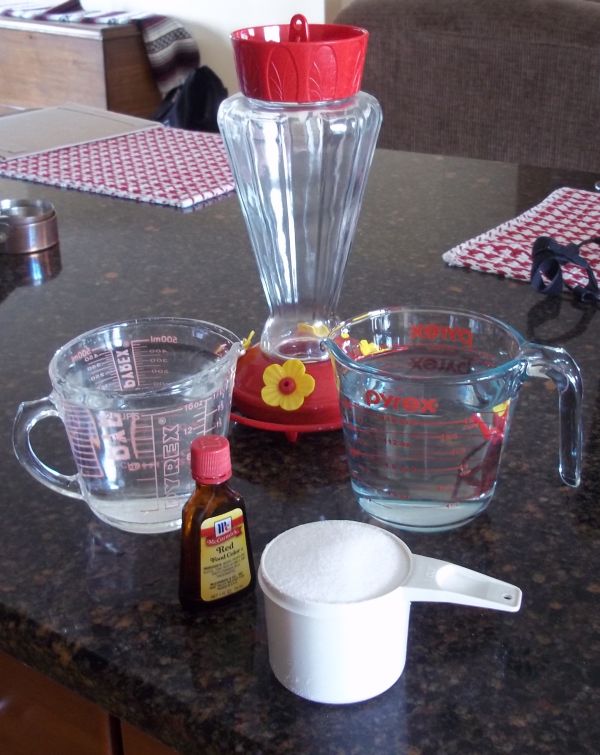
If they don’t find food, they’ll move on, however, once they locate your feeder they will visit each year. It’s best to have your feeder filled earlier rather than later. Store the remaining nectar in a sealed container in the refrigerator for up to two weeks. Regular sugar has small amounts of molasses, which is toxic to hummingbirds. Boil, cool, and fill your feeder.Īccording to the hummingbird society, it is best for the hummingbirds if pure white cane sugar is used, although beet sugar would be an acceptable alternative. In a saucepan, mix together 1 part pure white cane sugar and 4 parts water. This super easy recipe replicates the sucrose content of nectar producing flowers. Keep your feeder clean and full, and plant flowers nearby that bloom at different times.įor more tips on attracting hummingbirds, visit The Ultimate Guide For Attracting Hummingbirds. Offering a consistent source of food will also attract hummingbirds. Attract them with some red flowers nearby or get a feeder with with red accents. Hummingbirds are attracted to red, but don’t use any food coloring. The coastal areas, south Texas, Arizona, Florida, Mexico, the Caribbean, Central America, and South America enjoy hummingbirds year round. In the northern US, look for them to arrive mid May to early June. Where I live, in the midwest, hummingbirds arrive late April to early May. If you offer a feeder, however, please be vigilant about changing the nectar and cleaning the feeder regularly (as described above) to eliminate fungal infections.This homemade hummingbird nectar will keep your hummingbirds healthy, happy, and coming back for more! This 2 ingredient recipe, that replicates the sucrose content of nectar producing flowers, takes just 10 minutes! Humminbirds are at lowest risk for Avian flu because their feeders are species-specific. “Sick birds may appear lethargic, unusually ‘fluffed up,’ have nasal discharge, or have excessively watery eyes or swelling of the head and eyelids,” according to the SPCA. For British Columbia, Canada, see this article on “ removing bird feeders and baths during avian flu.” Follow advice for your location from local birding experts and government agencies. While waterfowl, raptors and scavenging birds such as gulls seem particularly vulnerable, song birds aren’t as widely affected.

Avian flu is highly contagious and has killed millions of wild birds, as well as infecting backyard chicken flocks and poultry farms. Avian Flu – Are Hummingbirds Affected?Īvian flu is taking a heavy toll throughout North America, with many municipalities advising the removal of backyard bird feeders. Track the migration of ruby-throated hummingbirds in North America add your own first sighting of the season.
#SAFE HOMEMADE HUMMINGBIRD NECTAR HOW TO#
How to Make Hummingbird Food – Videoįor visual instructions, watch a one-minute video on making homemade nectar. Once the feeder is clean again, rinse it thoroughly, multiple times, removing all traces of bleach.

A small bottle brush can be handy to scrub crevices.

If mold develops, you will need to soak the feeder in a 10% bleach solution (1 part bleach to 10 parts water) until the mold is gone. Follow the vinegar wash by rinsing three times with clear, warm water before refilling with sugar solution. If the feeder is dirty, try adding a few grains of dry rice to the vinegar solution to help scrub it clean. You should clean your feeder at least once a week, more often if the water gets cloudy.Īccording to the National Audubon Society, cleaning should be done by rinsing with one part white vinegar to four parts water. Let cool and store excess in refrigerator until ready to use.ĭo not add food coloring, honey (which ferments), or artificial sweetener, which has no nutritional value.

Boil the water first, then measure and add sugar, at the rate of 1/4 cup of sugar to 1 cup of water.


 0 kommentar(er)
0 kommentar(er)
